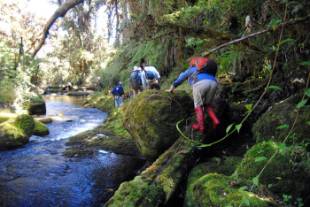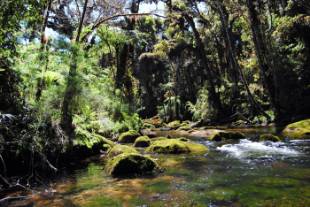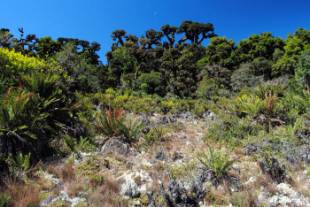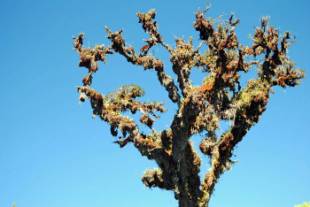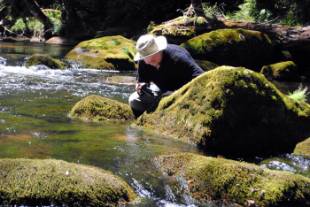Well no valentine’s day cards…sniff. Tom from Nature Live has been showing off his card for the last week and I was tempted to write one for myself. Today was another beautiful day though; bright blue skies and a light breeze.
After having separated into two groups for the past three days it felt good for us all to be working together again. We walked along the river on a very accident-inducing, slippery trail, with stunning views every few minutes.
(Click images to see them full size)
Our site for the day was an area of ‘turbera’ or peat bog - an open expanse of lichen dominated ground with scattered tree ferns (Blechnum buchtienii) around whose base are even more lichens, epiphytes and shrubs.
Overlooking the bog was a loan, probably a dead oak tree, which despite having died is home to a mini forest of it’s own on each branch. I spent more time than I should have trying to work out how many species were in the tree and the logistics of climbing up to collect them.
It was hard work pressing in the bright sun but we collected 58 species of vascular plants and Holger and Jo made some more fantastic aquatic lichen and moss discoveries.
It makes a real difference having the perspective of a different group of organisms. Holger was able to identify substantial amounts of basalt rock in the river bed which helps keep the pH close to neutral and so favour a rich and perse lichen community. This also gives us some clues to the history of these mountains.
He also very conveniently measures the temperature of the river (12°C) which encouraged me to have a quick dip before we headed back to camp.



